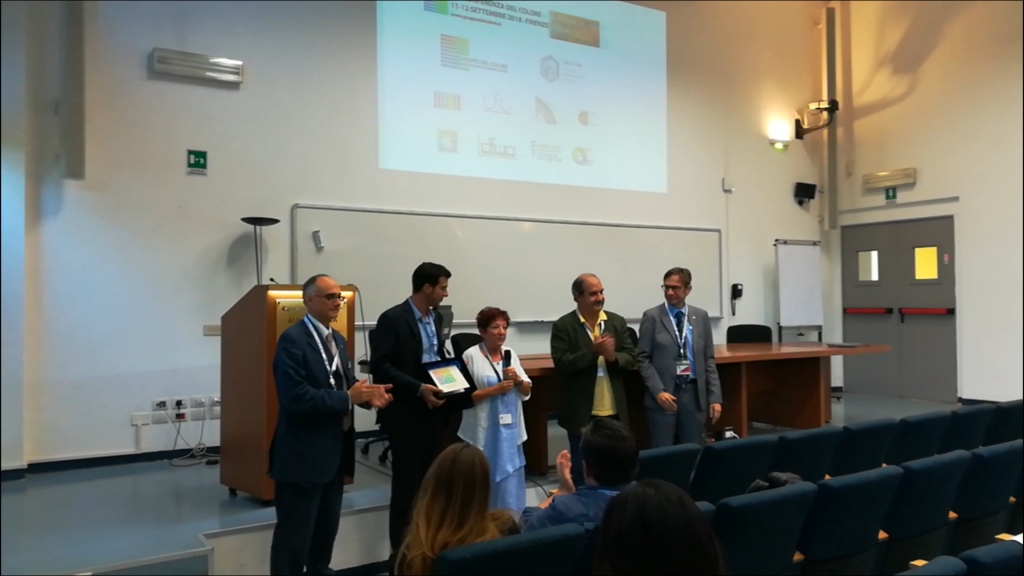COLOR AWARD 2018 to MAESTRO ROBERTO CAPUCCI
by Anna Marotta
The chosen title for the award, “Ten Questions to Roberto Capucci between art and magic,” aimed to highlight the culture of color in the world of fashion.
Once again, Roberto Capucci’s personality and intellectual character emerge powerfully, along with his ethical dimension: he has deliberately become a “search engine” for young enthusiasts in the field.
In his artistic education at the Academy of Fine Arts in Rome, the contributions of Mazzacurati, De Libero, and Avenali undoubtedly influenced his approach to artistic creation. It is not the case here to enumerate the numerous awards and recognitions he has received.
In 1961, his creations sparked enthusiasm at the Chambre Syndicale de la Mode française, while he participated in the Venice Biennale (1995-1995). He established the Roberto Capucci Foundation in Florence, followed by the Foundation’s Museum, now located at Villa Manin in Passariano di Codroipo, Udine. He funds the award (bearing his name) for young designers. In March 2013, in Piedmont, Venaria Reale hosted his exhibition “In Search of Royalty.”
In the interview/dialogue proposed by our association on the occasion of the Color Award, particularly on the theme of COLOR BETWEEN THEORY AND PRACTICE, Capucci declares convincingly: “For me, color is life, beauty, a smile, it is everything: imagine if one day we woke up, and the sky was all gray, the trees gray, the sun gray, it would be a push towards suicide for me. Color, on the other hand, is a stimulus for joy, can represent consolation, in difficult times, it can restore joy and rest. Also, for this reason, I look at Nature first and then move on to the great artists who have created incredible works using color. Educating oneself about color is not easy; few have the gift of intuition and balance, and mostly many follow fashion parameters adapting to a style that does not suit them. Many times it has been confirmed that my creations can serve as an exemplary context for color theory. Obviously, the theory does not suggest which combinations to use, forming instead a kind of grammar, like the study of harmony and counterpoint for a musician. Thus, the rules do not guarantee the work of art, but the work of art is not possible without the rules.
Regarding the relationship between FORMS, LINES, and COLOR, the Maestro, in his quest for new solutions, draws inspiration from many things, such as the shadow of a minaret, a palace, a colonnade, a fountain, a place like Petra. “One must observe, look, always,” he asserts. A singular chromatic characteristic of his creations is given by the relationship between objectual surface color and light: the changing fabric has the property of appearing faded where surfaces curve, and this shading adds to variations in brightness, which in the folds take on maximum prominence.
The resulting effect is that the fabric becomes luminous, but without artifice, with naturalness.
“Unfortunately,” he reflects, “today people no longer observe: they do not have the time, they do not look anymore, bombarded by images, and immersed in incredible ugliness, but one can still isolate oneself to perceive the beauty of lines and shapes.”
NATURE AS A SOURCE OF INSPIRATION IN THE ART OF FASHION
For the Maestro, nature (as for great artists) is “an inexhaustible, unrepeatable, continually surprising source of inspiration, which I study and observe in its forms, colors, passionately, methodically, and assiduously: water and stones, plants, flowers, and animals. A leaf can be observed for an indefinite time: its material structure, the way it folds, its colors and shades, the different perspectives depending on the point of view, continue to educate the artist’s eye.” Beauty is cultivated – Capucci’s thought goes – by getting used to observing beautiful things: the refinement of taste and spirit occurs through frequenting Nature and museums.
Thus, in an ideal itinerary from Leonardo to Goethe, the observation of Nature ties science to art. Even in dressing, therefore, we can affirm that “beauty will save the world”!
MOVEMENT AS AN ADDED VALUE
“I am convinced that everything comes alive with movement; color lives in movement, and the structure transforms into something real: I have extensively experimented with it.
Someone (Lia Luzzatto and Renata Pompas) speaks of mine as “polidimensional color” and, referring to movement, notes that color expands in space and time, while conferring its own motion to the form; when worn, the garment reveals and veils itself with skillful direction, showing unprecedented combinations.
Complementary colors present themselves as a rhythmic vibration alternating with Ittenian warm and cold tones, enhancing with colored shadows (in memory of Goethe) the soft shapes of petals and composing

